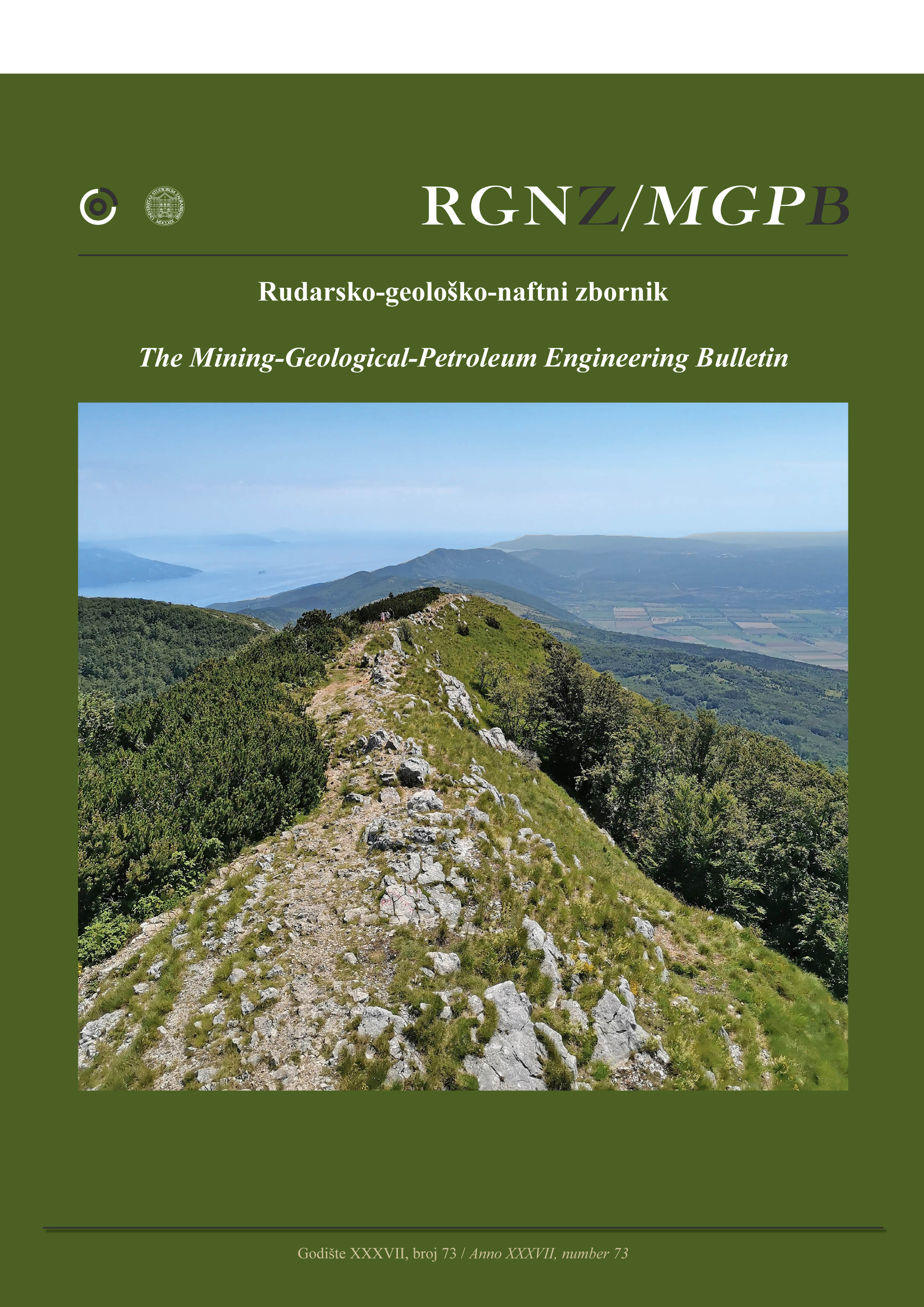Bog iron ores in central Croatia – mineralogical and geological case study on soil profiles
DOI:
https://doi.org/10.17794/rgn.2025.2.11Keywords:
bog iron ore, Kupa River, Sava River, trace metals, geoarchaeologyAbstract
The Pokuplje and Posavina regions (central Croatia) offer unique insight into the environmental conditions that favour the formation of iron (Fe) ores in low-lying areas. Three soil profiles from Žakanje, Osekovo and Pravutine, located in the Kupa and Sava river plains, were analysed to understand their mineralogical and geochemical composition, with a focus on Fe enrichment and trace metal content. The presence of impermeable clay horizons in these profiles contributes to the formation of a redox boundary that favours the precipitation of Fe in the form of oxyhydroxides. The reddish mottling observed in the middle horizons suggests that the studied soils may represent an early stage of bog iron ore formation. Geochemical analysis shows that these soils are moderately to slightly acidic, with silt as the dominant granulometric fraction and variable Fe oxide content in the profiles. The high Fe concentrations are consistent with the depth of groundwater fluctuations, which must have driven the redox cycle and promoted mobility and deposition of Fe. The contents of several trace metals (Cr, Ni, Zn, Pb and As) showed correlation with Fe. This implies regional occurrences of siderite and Fe-containing hydrothermal zones as a possible source of Fe, transported and precipitated into soil via hydrological processes. Overall, the results suggest that the combination of clay-rich, flood-prone landscapes and seasonal groundwater fluctuations provide ideal conditions for the formation of bog iron ore in central Croatia. These types of ores could have been an economically viable source for iron production during archaeological periods.
Downloads
Published
Issue
Section
License
Copyright (c) 2025 Tomislav Brenko, Sibila Borojević Šoštarić, Tena Karavidović, Tajana Sekelj Ivančan

This work is licensed under a Creative Commons Attribution 4.0 International License.
Creative Commons-BY
Authors who publish with this journal agree to the following terms:
In agreeing this form, you certify that:
- You read the ethical codex of the RGN zbornik available at journal web.
- You submitted work is your original work, and has not previously been published and does not include any form of plagiarism.
- You own copyright in the submitted work, and are therefore permitted to assign the licence to publish to RGN zbornik.
- Your submitted work contains no violation of any existing copyright or other third party right or any material of an obscene, libellous or otherwise unlawful nature.
- You have obtained permission for and acknowledged the source of any illustrations, diagrams or other material included in the work of which you are not the copyright owner.
- You have taken due care to ensure the accuracy of the work, and that, to the best of your knowledge, there are no false statements made within it.
- All co-authors of this submitted work are aware of, and in agreement with, the terms of this licence and that the submitted manuscript has been approved by these authors.
Publication licence
You retain copyright in your submitted work, according to journal license policy (CC-BY). By signing this form you agree that RGN zbornik may publish it under the publication licence. In summary the licence allows the following:
Anyone is free:
- To copy, distribute, display, and perform the work.
- To make derivative works.
Under the following conditions:
- The original author must always be given credit.
- The work may not be used for commercial purposes.
- If the work is altered, transformed, or built upon, the resulting work may only be distributed under a licence identical to this one.
Exceptions to the licence
In addition to publishing the work printed under the above licence, RGN zbornik will also enable the work to be visible online.
The journal editorial can change the licence rules anytime but it cannot retroactively restrict author(s) rights.


